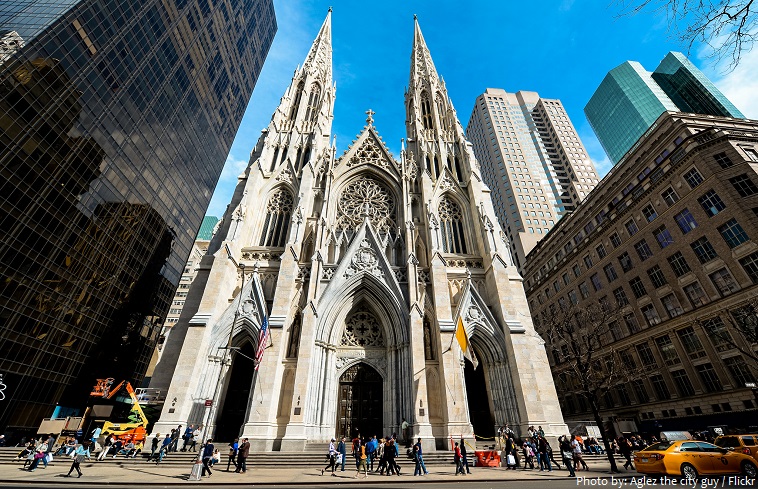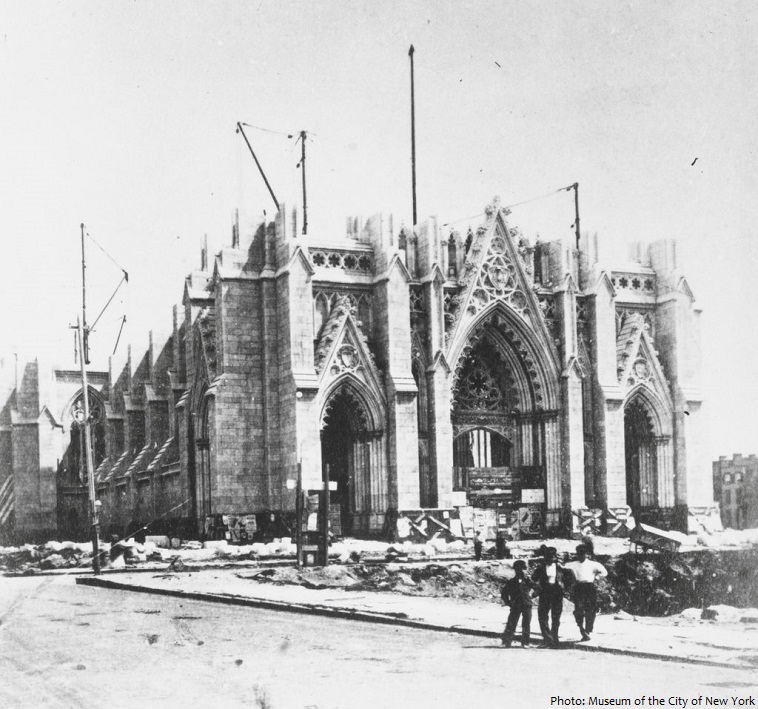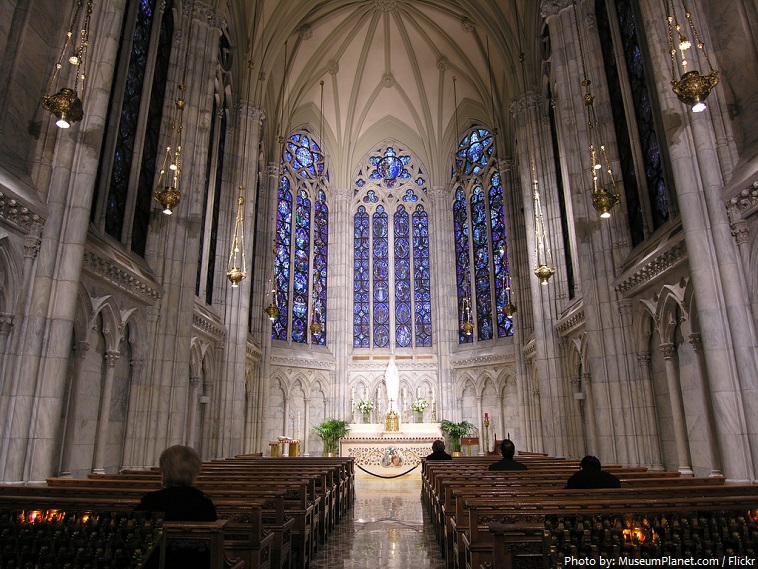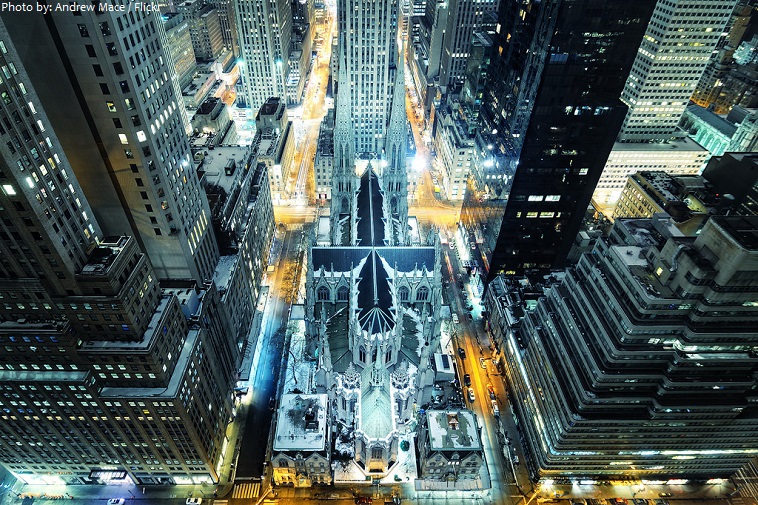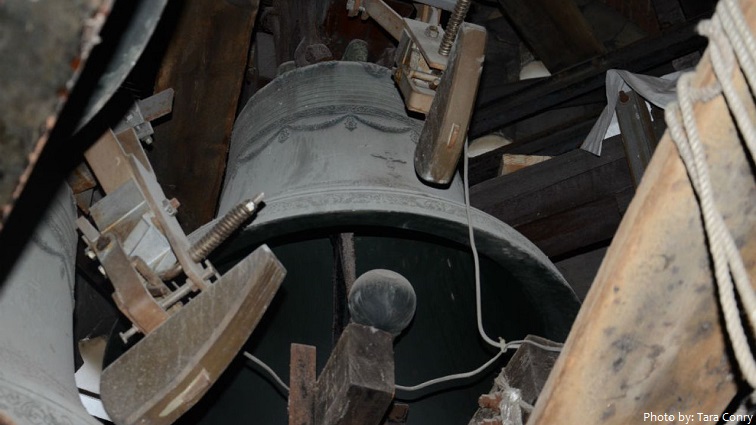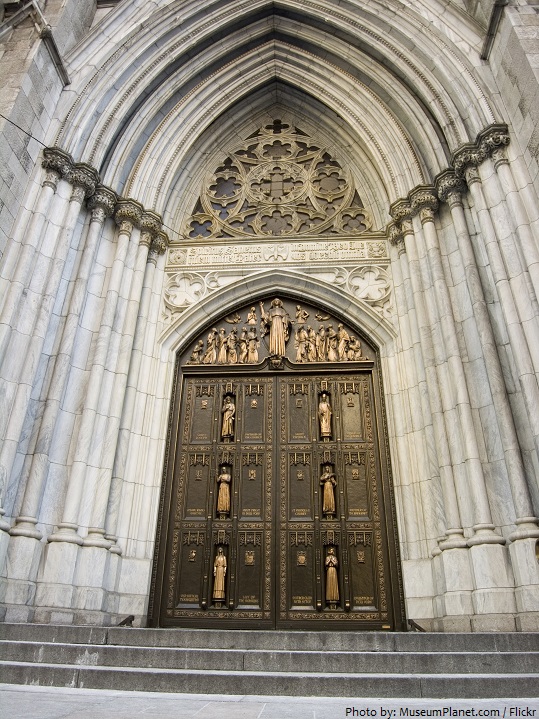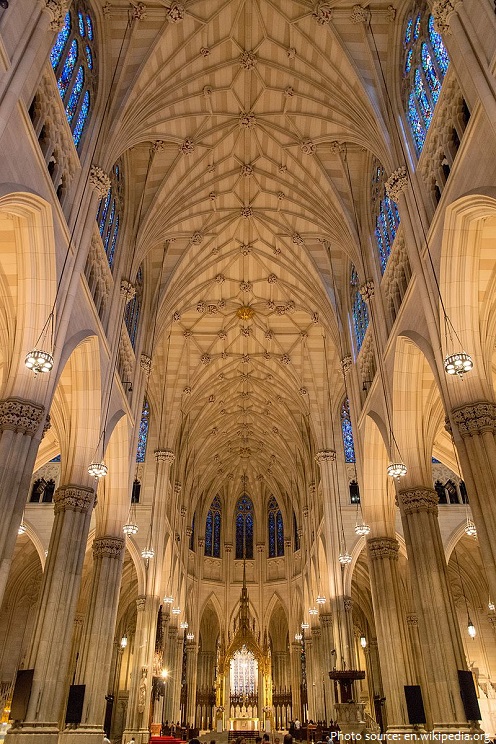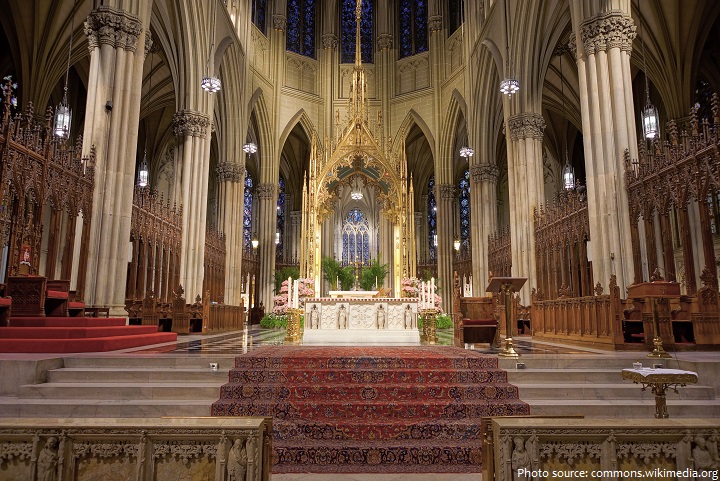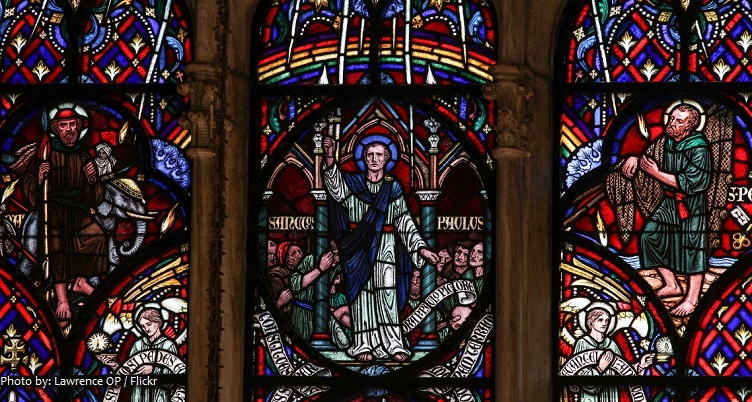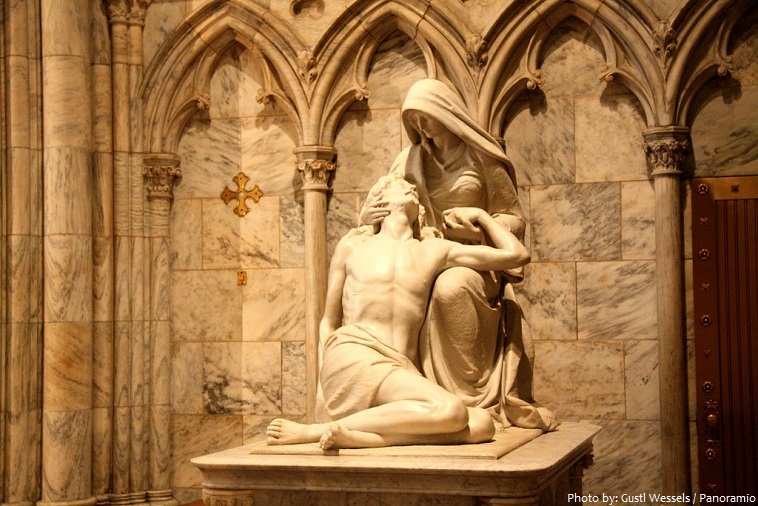The Cathedral of St. Patrick commonly called St. Patrick’s Cathedral is Roman Catholic cathedral church in New York City, U.S.
As the headquarters of the archbishop of the Roman Catholic Archdiocese of New York as well as a parish church, this marble-clad Manhattan landmark is one of the most distinctive and popular destinations in the city.
It is located on the east side of Fifth Avenue between 50th and 51st Streets in Midtown Manhattan, directly across the street from Rockefeller Center and specifically facing the Atlas statue.
St. Patrick’s Cathedral is the largest decorated gothic-style Catholic Cathedral in the United States and has been recognized throughout its history as a center of Catholic life in this country.
The story of New York’s great cathedral mirrors the story of the city itself. Created to affirm the ascendance of religious freedom and tolerance, St. Patrick’s Cathedral was built in the democratic spirit, paid for not only by the contributions of thousands of poor immigrants but also by the largesse of 103 prominent citizens who pledged $1,000 each.
St. Patrick’s Cathedral proves the maxim that no generation builds a cathedral. It is rather, a kind of ongoing conversation linking generations past, present and future.
The land on which the present cathedral sits was purchased in 1810.
Designed by the distinguished New York architect James Renwick, St. Patrick’s Cathedral was begun in 1859 to replace an earlier cathedral. The cathedral’s predecessor, known as “Old St. Patrick’s,” is still used as a parish church and is the oldest Catholic building in the city.
It was estimated that building the cathedral would take eight years when work began in 1858, the project took much longer because of its interruption by the Civil War.
The cathedral was completed in 1878 and was dedicated on May 25, 1879, its huge proportions dominating the mid-town of that time.
The archbishop’s house and rectory were added from 1882 to 1884 and an adjacent school (no longer in existence) opened in 1882. The Towers on the West Facade were added in 1888, and an addition on the east, including a Lady Chapel [photo below], designed by Charles T. Mathews, began in 1901. The stained glass windows in the Lady Chapel were designed and made in Chipping Camden, England, by Paul Vincent Woodroffe between 1912-1930. The cathedral was renovated between 1927 and 1931, when the great organ was installed, and the sanctuary was enlarged.
The cathedral, which can accommodate 3,000 people, is built of brick clad in marble, quarried in Massachusetts and New York.
It takes up an entire city block bordered by East 51st Street to the north, East 50th Street to the south, Madison Avenue to the east, and Fifth Avenue to the west.
At the transepts it is 53 meters (174 feet) wide and 101.2 meters (332 feet) long.
The spires rise 100.6 meters (330 feet) from street level.
Each of the 19 bells located in the cathedral’s north tower has a name and a unique Latin inscription. They’re named after saints and no two bells are the same. They vary in size, with the smallest weighing 78.5 kilograms (173 pounds) and the biggest (2,297 kilograms) 6,608 pounds, and each plays a different note.
The main facade has three porches with bronze doors.
The main doors that welcome visitors into St. Patrick’s Cathedral each weigh 4,200 kilograms (9,280 lbs). Astonishingly, they are so well balanced that they can be opened by a single person. Carved into their facades are the figures of holy men and women. They include: St. Joseph, St. Isaac Jogues, St. Kateri Tekakwitha, St. Patrick, St. Frances Xavier Cabrini, and St. Elizabeth Ann Seton.
The interior was designed in the style of English churches and contains numerous altars and statues.
The highlight of the cathedral is the main altar [photo below]: the baldachin over the main altar is solid bronze. The Roman artist Paolo Medici designed the Saint Elizabeth altar; it honors Mother Elizabeth Ann Seton, the first American-born saint. The Saint John Baptist de la Salle altar, one of the few original side-chapel altars, was sculpted by Dominic Borgia. The Papal bull is featured in the adjoining stained-glass window. Tiffany & Co. designed the Saint Louis and the Saint Michael altar.
The stained-glass windows were created by by artists in Boston, Massachusetts and European artists from Chartres, France and Birmingham, England. Charles Connick created the rose window.
The cathedral has more than 2,800 stained glass panels.
The Pietà, sculpted by William Ordway Partridge, is three times larger than Michelangelo‘s Pietà.
The cathedral’s Stations of the Cross won an 1893 artistry prize at Chicago‘s World’s Columbian Exposition.
St. Patrick’s Cathedral has two pipe organs. Both Organs of more than 9,000 pipes, 206 stops, 150 ranks and 10 divisions.
In 1945 the exterior of the cathedral was renovated extensively at a cost of more than $3 million.
An extensive restoration of the cathedral was begun in 2012 and lasted 3 years at a cost of $177 million. The restoration was completed by September 17, 2015, before Pope Francis visited the cathedral on September 24 and 25, 2015.
The Cathedral was named after St. Patrick, the patron saint of Ireland, in response to the increasing numbers of Irish immigrants in the city.
The cathedral and associated buildings were declared a National Historic Landmark in 1976.
St. Patrick’s Cathedral is visited by more than 5 million visitors annually.
